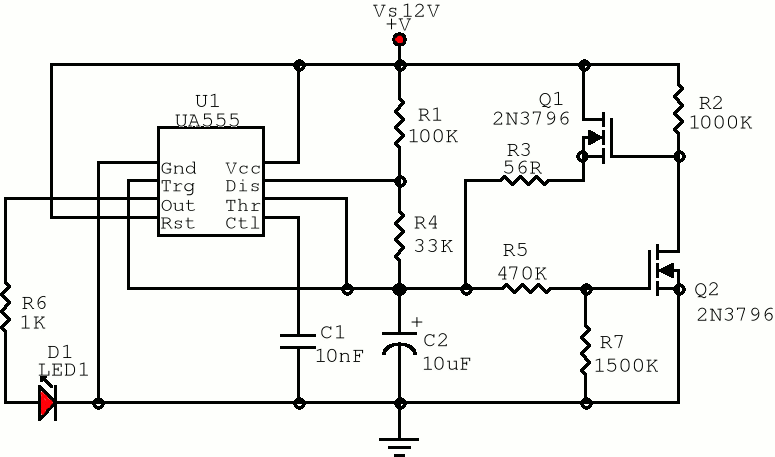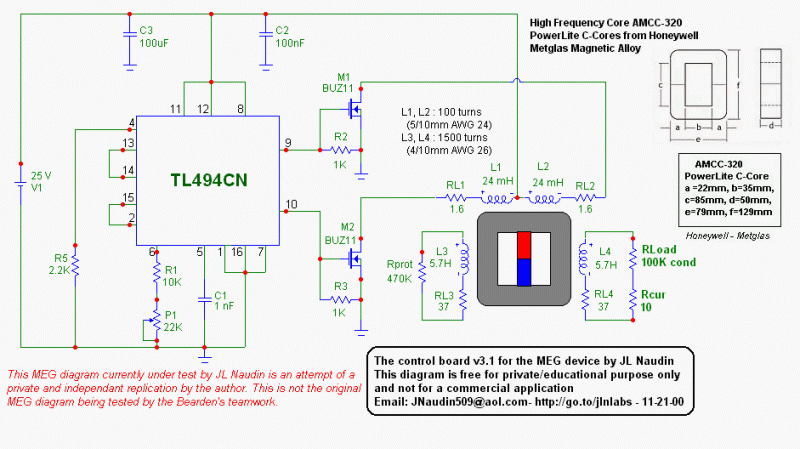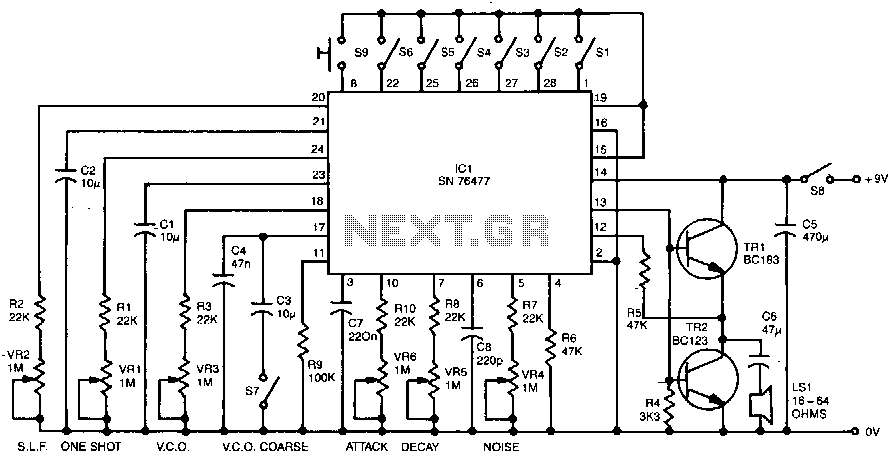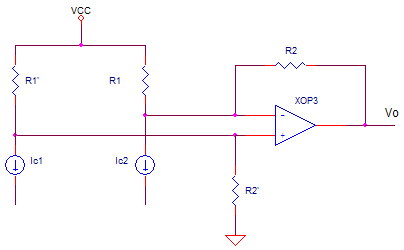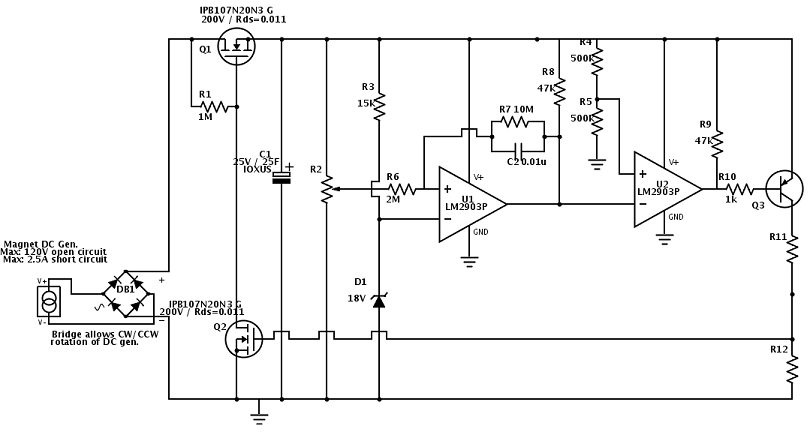
567 IC Pulse Generator With 25% Active Factor
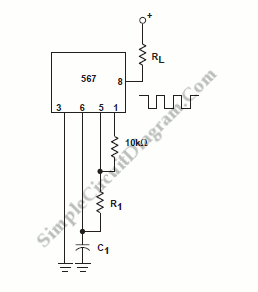
Unique applications of the 567 tone/frequency decoder IC include a pulse generator with a 25% duty cycle (active factor). This signal generator produces a specific output.
The 567 tone/frequency decoder IC is a versatile component widely utilized in various electronic applications, particularly in signal processing and tone detection. One notable application is the design of a pulse generator that operates with a 25% duty cycle. In this configuration, the 567 IC can be employed to generate a square wave output where the signal is high for 25% of the period and low for the remaining 75%.
To implement this circuit, the 567 IC is connected in a typical configuration where it can detect a specific frequency input signal. The output from the 567 can then be shaped using additional components such as resistors and capacitors to achieve the desired duty cycle. By adjusting the timing components, the pulse width can be controlled, allowing for fine-tuning of the output frequency.
In practical applications, such a pulse generator can be utilized in timing circuits, clock pulses for digital circuits, or as a modulation source in communication systems. The 567 IC's ability to provide stable frequency detection makes it ideal for generating precise pulse signals, contributing to the reliability and performance of electronic systems.Unique applications of 567 tone/frequency decoder IC? Here is one of them: pulse generator with 25% duty cycle (active factor). This signal generator produce . 🔗 External reference
The 567 tone/frequency decoder IC is a versatile component widely utilized in various electronic applications, particularly in signal processing and tone detection. One notable application is the design of a pulse generator that operates with a 25% duty cycle. In this configuration, the 567 IC can be employed to generate a square wave output where the signal is high for 25% of the period and low for the remaining 75%.
To implement this circuit, the 567 IC is connected in a typical configuration where it can detect a specific frequency input signal. The output from the 567 can then be shaped using additional components such as resistors and capacitors to achieve the desired duty cycle. By adjusting the timing components, the pulse width can be controlled, allowing for fine-tuning of the output frequency.
In practical applications, such a pulse generator can be utilized in timing circuits, clock pulses for digital circuits, or as a modulation source in communication systems. The 567 IC's ability to provide stable frequency detection makes it ideal for generating precise pulse signals, contributing to the reliability and performance of electronic systems.Unique applications of 567 tone/frequency decoder IC? Here is one of them: pulse generator with 25% duty cycle (active factor). This signal generator produce . 🔗 External reference
